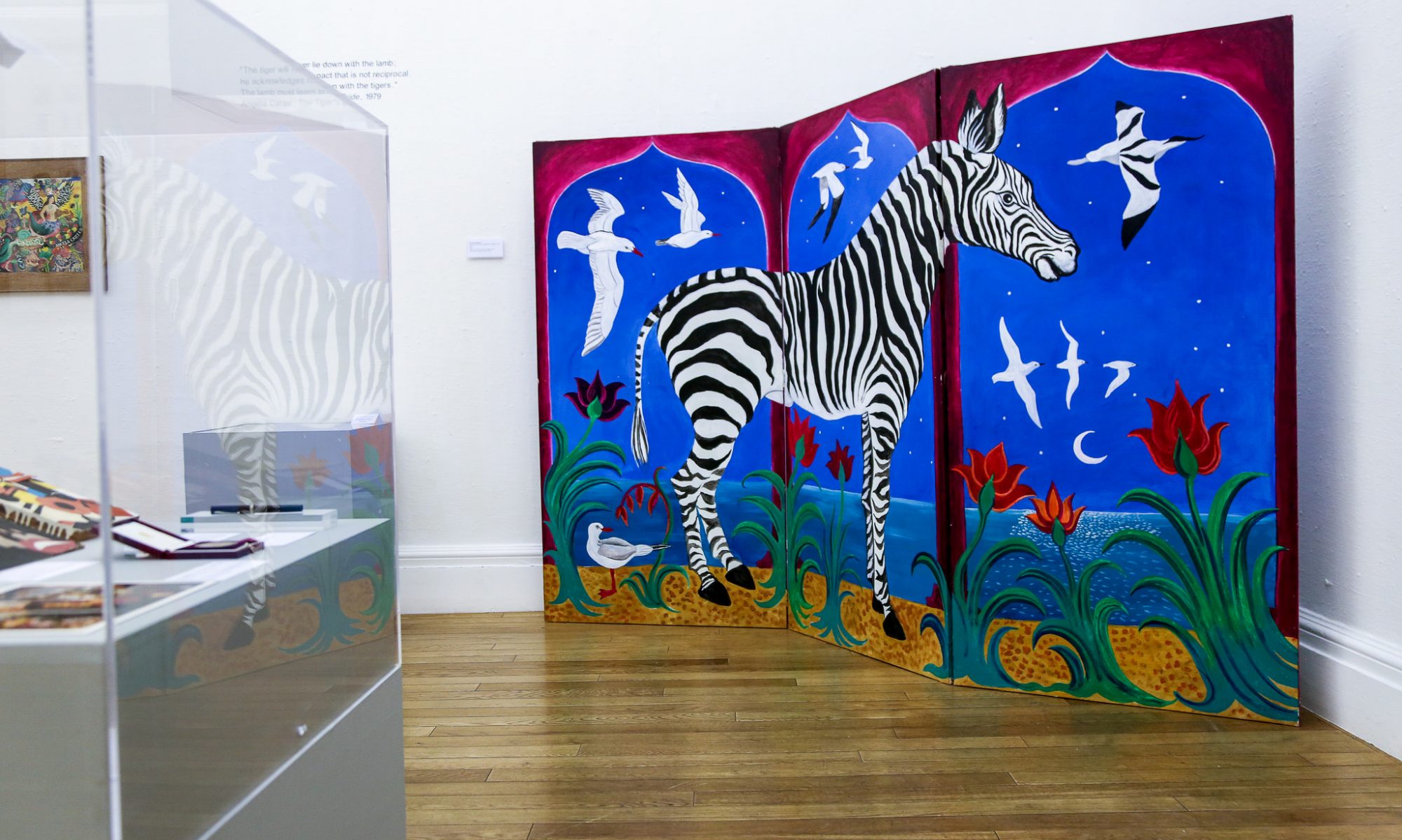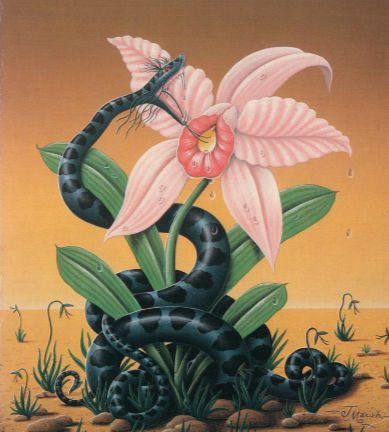Call for Papers
Angela Carter and Nature. “Penetrating to the Heart of the Forest” from an Ecocritical Perspective
University of Szeged, Hungary
15-16 May 2026
Angela Carter’s writing—rich in intertextual allusions, generic hybridizations, and socially critical, ironic demythologizations—lends itself to be read as a rhizomatic text that privileges multiple entry points and connections, much like a rhizome’s root system. At this international conference, hosted by the Institute of English and American Studies of the Faculty of Arts at the University of Szeged, Hungary, organized under the aegis of the Angela Carter Society, we seek to interpret this vegetal metaphor in a literal sense. We invite participants to explore Carter’s oeuvre from an ecocritical and/or ecopoetic perspective, focusing on her artistic representations (and/or lived experiences) of nature, animals, plants, non-human lifeforms, and nature-cultural assemblages.
While the subversion of hegemonic systems of domination—a leitmotif in the Carterian narrative—has already been extensively analyzed in relation to challenges against patriarchy, heteronormativity, classism, capitalism, ageism, and canonical knowledge formation, there remains ample scope for investigating how Carter interrogates anthropocentric assumptions through activating environmental imagination, urging a rethinking of human-nature ties. We aim to fill this critical gap by encouraging participants to re-read Carter’s works through a green lens, to venture into a wilderness of interrelated questions. How do Carter’s animal bride/groom tales revise normative scripts of gender performance and cultured embodiment? If humanimal hybrids—bird-woman, werewolf, Erlking, Wolf Alice—testify to Carter’s interest in liminal states and metamorphic becoming, what do they reveal about interspecies entanglements, the fluidity of the boundary between humans and non-human animals? What are the symbolic significations conveyed by Carter’s literary representations of natural landscapes—forests, deserts, tundras, beaches, and parks—and what do they suggest about the nonhuman agency of wolves and woods “that swallow you up”, the material sense of ecological embeddedness, as well as the limits of human conceptualizations of nature? Can Carter’s post/apocalyptic fantasies be regarded as precursors of climate anxieties and posthumanist philosophies?
In “Overture and Incidental Night Music for a Midsummer Night’s Dream” Carter makes a subtle differentiation between the haunted forest and the enchanted wood: the former is a locus “to a perpetual absence from humanity, an existential catastrophe, for the forest is as infinitely boundless as the human heart”, while the latter is a place for “the pleasure of roving, the temporary confusion of direction, […] a holiday from which you will come home refreshed, with your pockets full of nuts, your hands full of wildflowers and the cast feather of a bird in your cap”. Lyrical passages like this invite an affective narratological analysis of the latent ecopoetic layers of Carter’s writing, which explore the complex, mutually formative interrelationship of humans and their natural environment. These green-shaded passages, like all her other texts, are themselves extensions of an ecosystem, informed by intertexts ranging from Henri Rousseau’s painted jungles, Romantic nature poetry, fables, and bestiaries to the tactile sensuality of Meret Oppenheim’s surrealist fur cup, demythologizations of Mother Nature, and postmodernist problematisations of the culturally constructed notion of the “natural.” Her creative mingling of ecological concerns with gothic themes and feminist politics into ecogothic and/or ecofeminism is also worthy of scholarly attention.
While the circus animals of Nights at the Circus, Leda and the Swan in the Magic Toyshop, the fox tapestry in Love, or feline fantasies from Puss-in-Boots to Lizzie’s tigers may function as metaphors of complex human psychic comportement, concerns for actual animals’ abuse and misrepresentation crop up in Carter’s journalistic writing. Essays like “At the Zoo,” or “Animals in the Nursery” trace an eco-feminist ethics to promote empathy, relational identity, and human-animal kinship without any sentimentalism. “In Pantoland” recalls a mythopoetic past when “in the time of the sky wolf, when fertility festivals filled up those vacant, dark, solstitial days, we used to see no difference between ourselves and the animals” and “little children remember [… ] how once we knew that the animals were just as human as we were, and that made us more human, too.” In line with today’s critical posthumanist philosophies (including Braidotti, Wolfe and others), rejecting the rigid human/animal divide along with the idea of human exceptionalism paradoxically deepens the ethical sense of being human here.
We welcome scholars from diverse disciplines to join this critical conversation and contribute to a vibrant exchange of ideas on Angela Carter’s ecological imagination.
Contributions could address, but are not limited to, one or several of the following areas:
- Carter’s literary representations of natural environments (forests, deserts, tundras, landscaped parks) and their psychogeographical implications and spatial poetics
- Carter’s bestiary: literary representations of animals, plants, non-human lifeforms
- Animal ethics, interspecies relationships, metamorphic becomings, monstrifications, dissolutions of human/nonhuman boundaries in Carter’s fiction
- Carter’s journalistic writings on animals and their place in culture (children’s books, pets, zoos, etc.)
- Narratological analysis of Carter’s ecopoetics
- Temporal ecologies in Carter’s fiction: cyclical time, deep time, nonhuman temporalities
- Material ecocriticism: the role of matter, objects, and substances (earth, water, blood) in Carter’s narratives
- Artists inspiring or inspired by Carter’s environmental imagination
- The relationship between Romanticism and Carter’s interest in the natural world
- Nature-related myths, fairy tales, and folklore as environmental commentary informing Carter’s work
- Comparative readings of Carter’s literary works with other writers and artists in terms of similarities and/or differences with respect to representations of ecological ideas
- Readings of Carter’s literary works that blend ecology with the Gothic: the Eco-Gothic as a new perspective
- The relationship between Ecofeminism and Carter’s literary works; Queer Ecologies
- Readings of Carter’s literary works that draw on or inspire influential ideas and concepts from ecocriticism, environmental studies, and Anthropocene studies
- Carter’s representations of apocalyptic and post-apocalyptic events – and their implications for all forms of life and art in the future; The Anthropocene imagination: Carter’s relevance to planetary crises and speculative futures
- Technology vs. nature in Carter’s works: tensions between mechanization and organic worlds; pollution, bodily corruption, environmental degradation as cultural critique.
- Food, consumption, and ecological ethics: representations of eating practices, carnivorism vs. vegetarianism, and their environmental implications in Carter
The conference will also feature some special events, including a visit to the local botanical garden, an animal-themed contemporary art exhibition, and a cruise on the river Tisza.
Keynote Speakers
Anna Watz (Uppsala University)
Michelle Ryan-Sautour (University of Angers)
Caleb Ferrari (University of the West of England)
Submissions
Please note that to present at this conference you need to be a member of the Angela Carter Society – you can join here.
Proposals of 300 words should be sent to Anna Kérchy (akerchy@ieas-szeged.hu) and Caleb Ferrari (caleb.ferrari@uwe.ac.uk).
Deadline: 31 January 2025.
The Angela Carter Society Essay Awards will be announced at the conference. Please read more about how to submit here.
Deadline: 31 January 2025.

